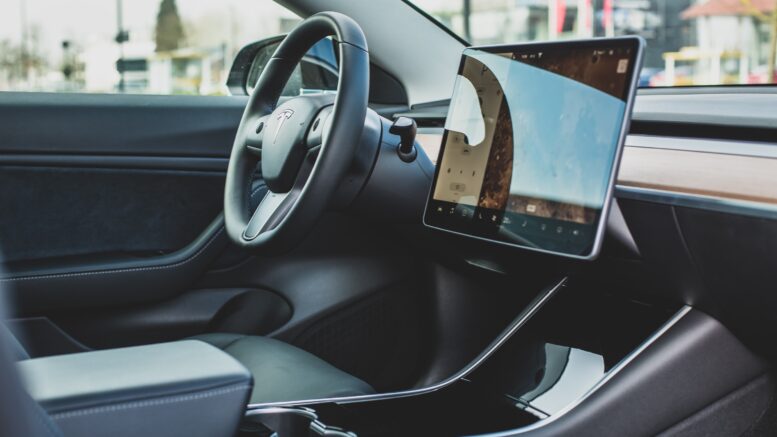There’s nothing quite like hopping in a new car and marveling at all of its bells and whistles.
While new car technology is fun and exciting, it’s important to balance those bells and whistles with technology that serves a greater purpose. By staying up-to-date with the latest features, the potential impacts on safety and convenience, and even the expectations of car owners across the globe, you’ll feel more comfortable and confident with the new car technology offered today.
You’ll also be able to adapt to and embrace those changing tech features as they start to appear. The more you understand this type of tech, the easier it will be to choose the right features for your next vehicle.
What You Need and What You Don’t
Again, it can be nice to show off fancy features in a new car, but not all new technology is “necessary” to have a safe and comfortable driving experience. Things like electronic door handles, for example, might look cool and they claim to improve fuel economy. But they tend to ice over easily, they can be difficult to open, and some can even break with ease.
Touchscreens have also become more common in vehicles. The first make that likely comes to mind is Tesla, when you’re met with a large touchscreen over the center console when you slide into the car. While these can be useful and help you customize your driving experience, too much tech can also be confusing.
Plus, not everyone is comfortable using it for things like air controls, radios, and even windshield wipers. The last thing you want is to have to navigate through several screens to turn on the windshield wipers in the middle of a rainstorm — and some touch screens will even disable certain features while the car is in motion. While it’s meant to keep you safe and free from distraction, it can also be inconvenient.
Connective Car Tech
You can still pick and choose a lot of different tech options in today’s vehicles, but the reality is that technology continues to grow and move at a rapid pace. There are some aspects of this advanced tech that you’ll undoubtedly have to adapt to and accept as you continue to buy new vehicles. One of the biggest changes we’re seeing in cars today is connectivity.
Connected cars are meant to help you stay safe on the road, but beyond that, they’re essentially turning your car into a “smart vehicle” that can do just about anything for you via voice command and monitoring systems. This is mainly due to the growth of 5G technology and greater connectivity throughout the globe. With that kind of speed, you can experience more accurate and streamlined tech features in your car that work better than ever before.
Enhanced Advanced Driver Assistance Systems (ADAS) are also becoming more common, contributing to lane departure warnings, blind spot monitoring and warnings, advanced cruise controls, and automated braking.
Adapting to Changes
So, how can you adapt and adjust? You have to be willing to give up a bit of control when it comes to how your car functions. These features aren’t just designed for safety, but for you and your car to work together for the best possible driving experience.
You also don’t have to feel overwhelmed by all of the new tech features in your car. Most come with user-friendly learning resources that are easy to understand. Start with a piece of technology you’re already familiar with – your phone. Most of today’s vehicles can be paired with smartphones. That can help with everything from listening to music to GPS navigation and hands-free texting. If you want to learn even more, lean into your car’s owner’s manual, or consider taking it to the dealership for a one-on-one session with a salesperson.
Learning more about these features can also help to prepare you for software updates. Not all cars have this feature, but some will periodically update to ensure you’re using the latest and greatest in vehicle technology. Your car might alert you when a software update is available or you might have to check your car’s infotainment system. Software updates can help with things like better controls for driver safety and greater analysis of road conditions. Don’t ignore them, and make sure you’re always up-to-date.
Safety Features That Make a Difference
Going back to safety, it should be your top priority when it comes to as many vehicle tech features as possible. It’s okay to enjoy some of the “extras” that make your life easier, but when it comes to choosing the best types of technology for your car, the most important features should make the driving experience safer for you and your passengers.
Some of those safety features are flying under the radar as more flashy tech features are brought to light. For example, drowsiness detection systems are already being implemented in many vehicles, offering warnings when your vehicle thinks you might be struggling to stay awake. Some can redirect you back on the road, while others can encourage you to pull over. Unfortunately, this isn’t yet a standard feature in all vehicles, but it’s something you can request, especially if you do a lot of driving every day.
Conclusion
When it comes to navigating new car technology, the basics of car buying haven’t changed. Your goal should always be to find or create a vehicle that meets your needs and protects you and your passengers. Driving a car should be fun, and you should take advantage of things like voice command technology and self-parking features. Just be sure to not compromise safety features and choose a car with technological advancements that fits your comfort level.





